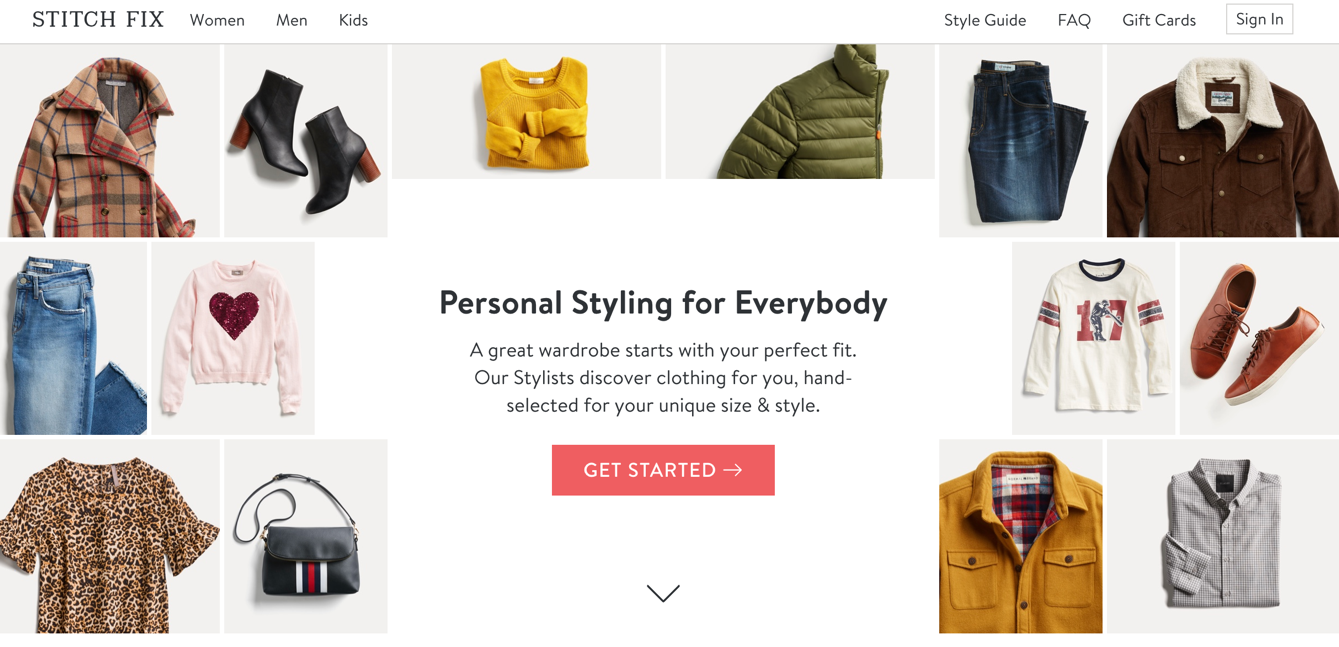06 May 5 Examples of Value Propositions & Why They Are So Great by @natalieannhoben
A value proposition is an answer to a simple question:
Why should I buy from you and not your competitor?
It should be:
- Simple for a person to understand.
- Unique.
- Measurable.
A value proposition is essentially the most critical aspect of your marketing copy.
If you don’t have one in mind when you begin to draft content, you are basically in a boat without a paddle to steer and guide your content creation efforts.
An effective value proposition directly communicates with your customers and tells them, simplistically, why your company, service or product stands out amongst competitors and why it will be the best solution to solve their problem.
The advantages and returns for spending the time to create a strong value proposition can be paramount. By creating an effective, unique value proposition, you can potentially:
- Attract more engagement from more customers.
- Increase conversions from those customers.
- Stand out among your competition.
- Increase customer loyalty, and thus, influencers for your company.
Many businesses, though, do not spend enough time developing a value proposition.
Oftentimes they try to replace them with random discounts, throw money at disorganized and less strategic marketing campaigns, and so forth.
They also commonly misinterpret what a value proposition is exactly. Many brands push their brand, their brand, their brand.
A value proposition should not be focused on the company but on the people you are trying to reach.
Many companies also create a generic message that doesn’t necessarily translate over, or hit close to home, for their customer base.
This type of messaging may include statements such as “satisfaction guaranteed”, “best quality”, and others that are not specifically tailored to an audience.
With a solidified value proposition, it is easier and more cost-effective to attract and keep the customers you want coming back.
So, now that we know what a value proposition is and what it isn’t, what are some examples of brands that have nailed it?
1. Trello


What they sell: A visual project management tool.
How it’s helpful: Streamlines project organization for multiple parties within a company.
How it stands out from competitors: It quickly organizes tasks and deadline into an easy-to-understand visual card format and the base version is free and shareable with anyone within an organization.
Is their proposition communicated simplistically?: Yes, it is easy for people to understand right off the bat. The subheadline addresses doing away with outdated project management practices that can oftentimes be a headache. This tells customers how directly Trello will make their lives easier.
2. Stitch Fix


What they sell: Personal wardrobe styling services.
How it’s helpful: Stylists help busy bees out there find clothing fitting for their style and ship it directly to them.
How it stands out from competitors: Offers quick, customizable, unique clothing sent to a person by stylists
Is the proposition communicated simplistically?: Yes. Their messaging pronounces that they not only offer personal styling, but they offer it to individuals of all different shapes and style preferences – casting a wide net for who their target audience is.
3. Evernote


What they sell: Software for tasks lists and note-taking.
How it’s helpful: Helps users easily organize and share notes as well as tasks across notepads, devices, locations, etc.
How it stands out from competitors: Has major capabilities that allow a user to feel organized with a sophisticated notepad with cloud-based capabilities so nothing gets lost.
Is the proposition communicated simplistically?: Yes, the proposition addresses users pain point directly – a lack of organization or a lack of a better tool to help them get organized. It specifically states what the tool can be used for to stay on top of tasks, and mentions a headache it can help people avoid…tasks, notes or reminders falling through the cracks.
4. HotJar




What they sell: Heat mapping and behavior tracking software.
How it’s helpful: Assists marketers and others in related fields, such as project managers and developers, in understanding how users are interacting with a website.
How it stands out from competitors: Heat mapping, video recordings, and reports that allow you to analyze user behavior on a website. As well as user surveys and polls.
Is the proposition communicated simplistically?: Yes, visitors are told exactly what the tool does right from the get-go: heat mapping, visitor session recording, user surveys, and polls. It also speaks to the fact that multiple team members can use the tool to make insights, and even calls out GDPR compliance.
5. Freshly




What they sell: Provide prepared meal kits.
How it’s helpful: Freshly cooks and deliver meals; customers only have to heat them up.
How it stands out from competitors: People can choose from over a range of 30 meals with advertised natural ingredients, delivered to your door. There is also an opt-out option, and the possibility to cancel specific weeks or at any time in general, as opposed to being locked in for months.
Is the proposition communicated simplistically?: Yes, it is communicated simplistically with helpful visuals and icons that outline the process of using the service in a clear way.
Nail Your Brand’s Value Proposition
It is imperative to nail a unique value proposition if you want to convert a customer and maintain their loyalty.
There are a few steps to take when starting the brainstorming and research process for the perfect value proposition for your brand:
Research Your Audience
- What do they do for a living?
- Where do they live?
- What do they search for?
- What are their common pain points?
Create a Buyer Persona
After extensive research has been conducted on your target audience, analyze the data and look for:
- Repeated pain points.
- Specific language that a buyer may use.
- What industry they work in.
Do Some Competitive Research
After researching your target audience, you may find that they already use a similar product or service to one your company is trying to market to them.
Research those competitors and find the key advantage(s) that your product or service can provide apart from them. Finding the primary benefit of your product or service is pivotal to differentiate your company from others.
Over to You
Make sure to put the time and resources into pinpointing the right messaging for a value proposition for your brand based on what your customers are looking for and what makes you stand out.
Do this in a simplistic manner that focuses on your target audience and not your brand, and you’ll eventually get ahead with your value proposition.
Image Credits
All screenshots taken by author, May 2019
Sorry, the comment form is closed at this time.